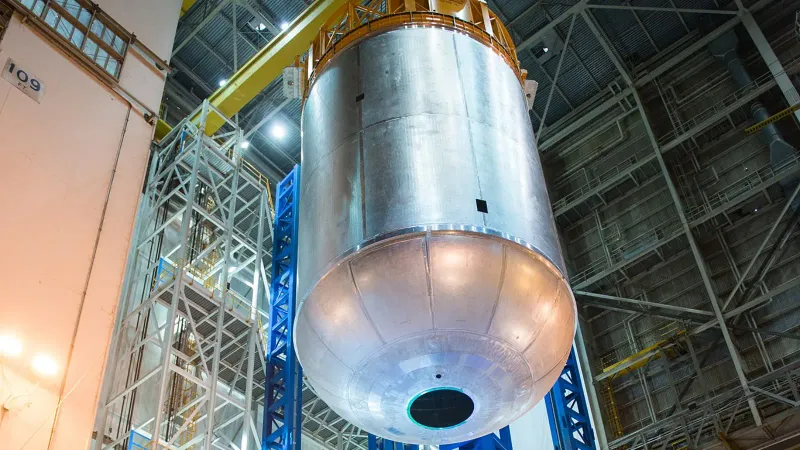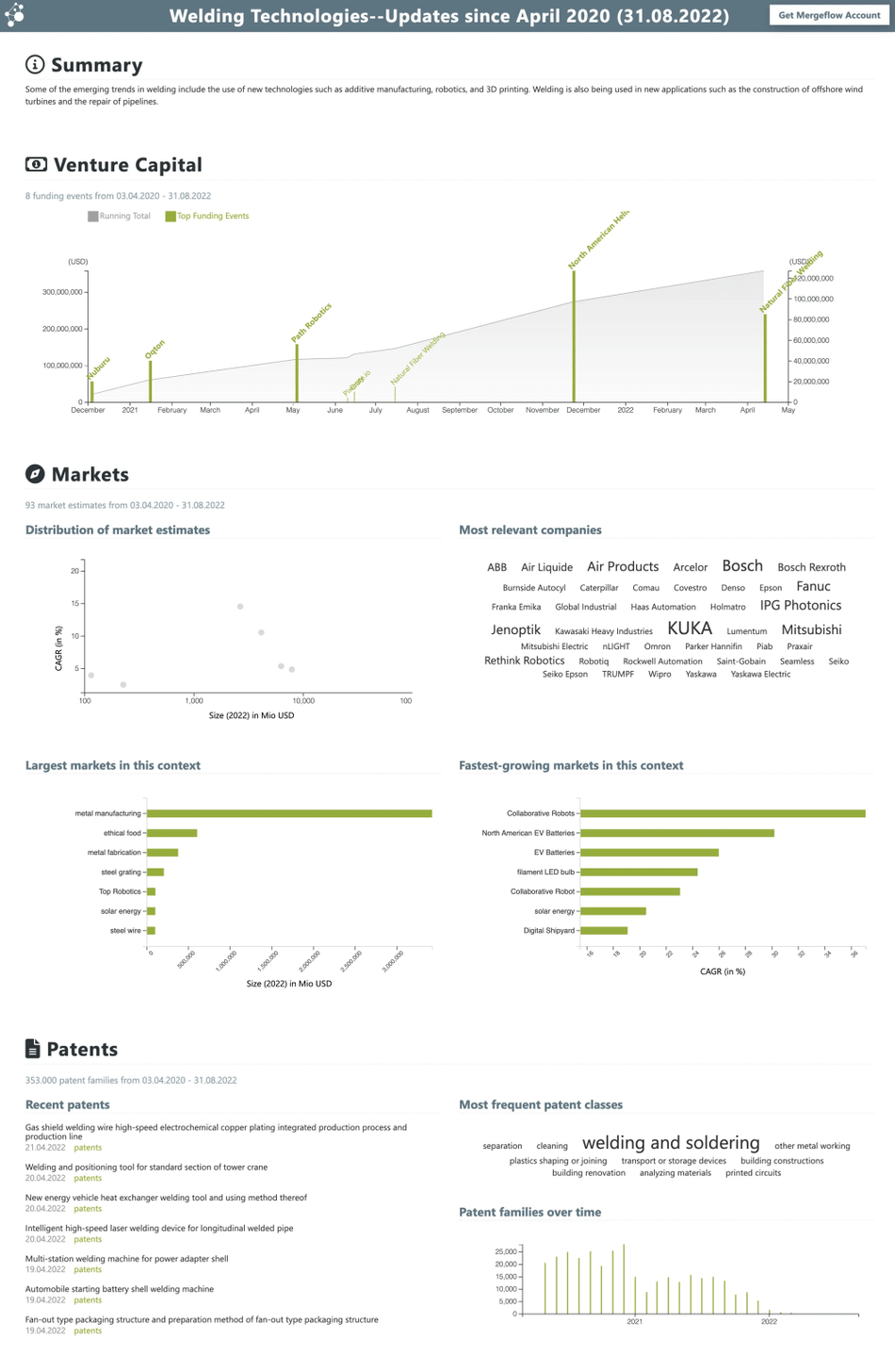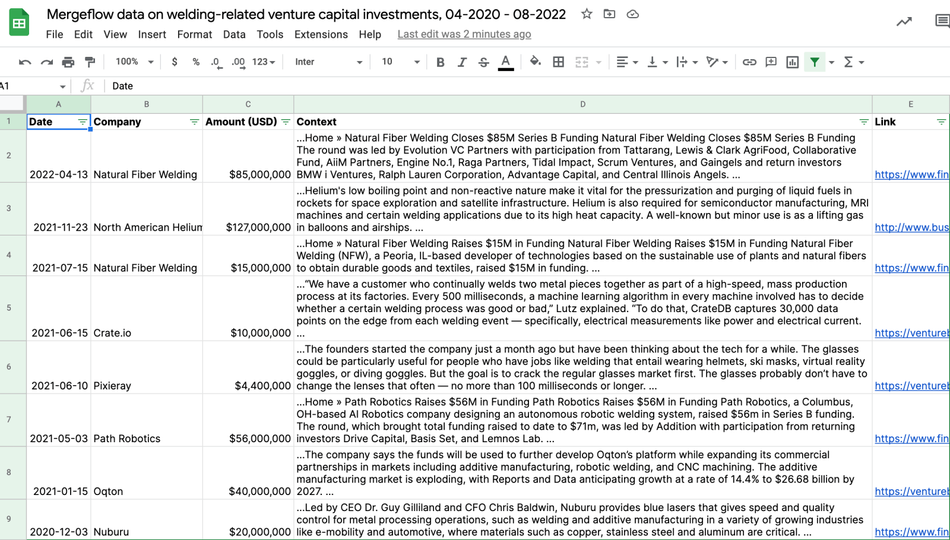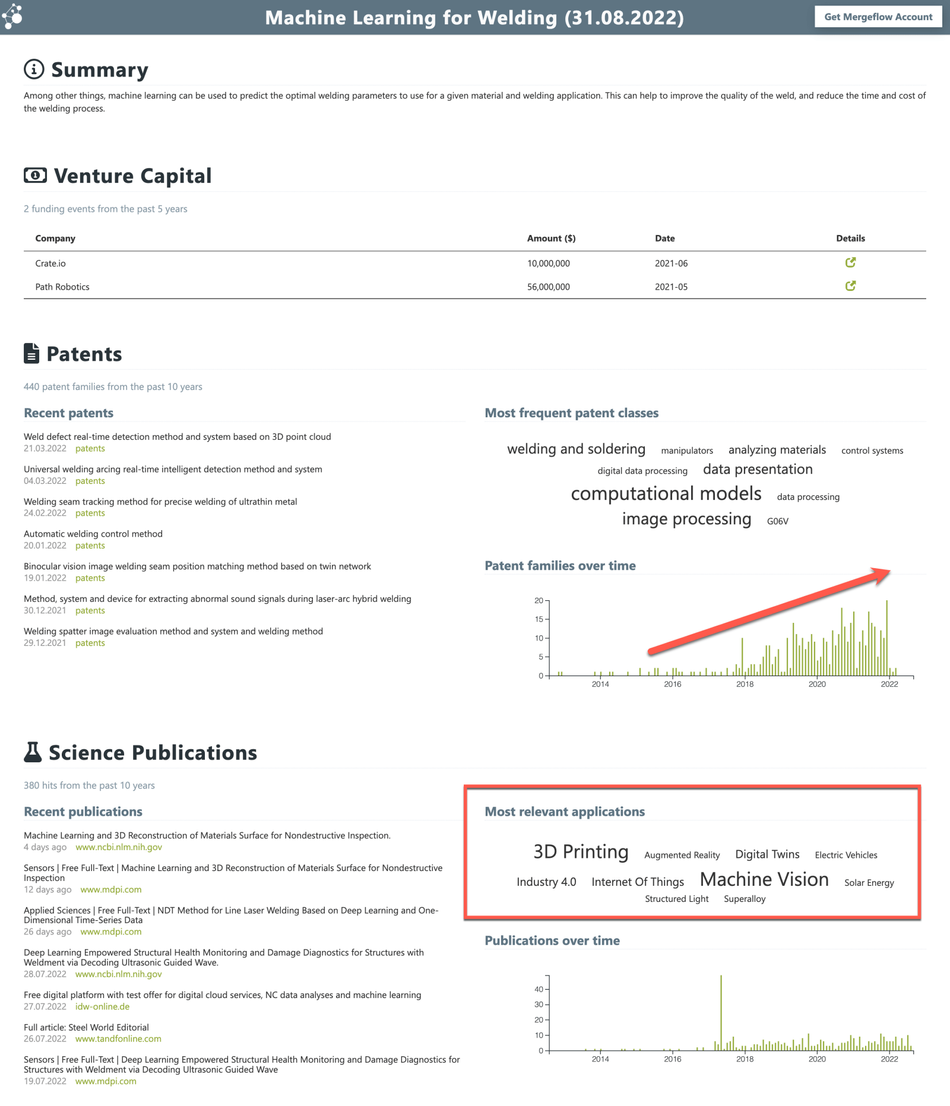Welding: What's new? And what does it have to do with going to the Moon?
When you ask people to name a few cutting-edge technologies, they’ll probably mention artificial intelligence, quantum computing, autonomous vehicles, perhaps synthetic biology… but probably not welding.

SLS Liquid Oxygen Tank Hardware in Welding. NASA/Michoud/Steve Seipel, from Wikimedia Commons.
When you ask people to name a few cutting-edge technologies, they’ll probably mention artificial intelligence, quantum computing, autonomous vehicles, perhaps synthetic biology… but probably not welding.
But while welding usually doesn’t make front page headlines, it has many interesting facets. It involves materials science, robotics, metallurgy, and, yes, machine learning. And you need welding for making all kinds of things: buildings, for example; bicycles, ships, aircraft, cars, kitchenware, power plants, turbines, body implants, textiles–and rockets (more on that later).
I wrote about some welding technologies back in 2020 already, in this blog post:
10 welding technologies at the edge of the possible –>
And I used welding as an example in our Tech Discovery for Innovators video course:
How to get a 360° view on a topic ->
What’s new in welding? What does welding have to do with machine learning? And why do we need welding for going to the moon?
Let’s look at each question in turn.
What’s new in welding (since 2020 when I last checked)?
The welding technologies article I mentioned above is from 2020.
So you can easily see what happened since then, I made a data snapshot from Mergeflow with venture investments, patents, market estimates, scientific publications, news, etc since then. To see the snapshot, click here.

So you can zoom in more on some of the data, venture capital fundings, I made a Google Sheet with more details:

Are you curious and would like to explore more?
Sign up for a 14-day free Mergeflow trial ->
Welding and machine learning
What does machine learning have to do with welding? Among other things, machine learning can be used to predict the optimal welding parameters to use for a given material and welding application. This can help to improve the quality of the weld, and reduce the time and cost of the welding process.
Here is an interactive data snapshot from Mergeflow:

As you can see, for example, patenting activity in the area has gone up considerably (-> red arrow in the screenshot). And, probably not surprisingly, 3D printing and machine vision are among the most relevant applications that are discussed in science publications.
What does welding have to do with going to the Moon?
It’s end of August 2022. Like many other people, I’m excited about the upcoming first launch of the new Artemis rocket.
The Artemis rocket has a massive liquid hydrogen tank. And for the manufacture of this tank, or rocket parts more generally, welding technologies play a central role.
I didn’t know just how difficult and sophisticated this is until I watched Destin Sandlin‘s great video about how rockets are made.
See a Mergeflow data snapshot on friction stir welding ->
In fact, it was Destin’s video that prompted me to look deeper into welding technologies back in April 2020, when I wrote my first article about welding.
I made another Mergeflow data snapshot, this one on welding in the context of spacecraft, which you can see by clicking here.
Just to highlight some findings from this (my personal selection, yours might be different):
Supramolecular adhesive with usable temperature range of 400 degrees Celsius: Welding by opposing molecular charges. The high temperature range could be useful for making spacecraft parts.
Leveraging in situ resources for lunar base construction: Welding, but on the moon.
Strong weld joints for aerospace applications: Using positrons to improve the efficiency of friction stir welding.